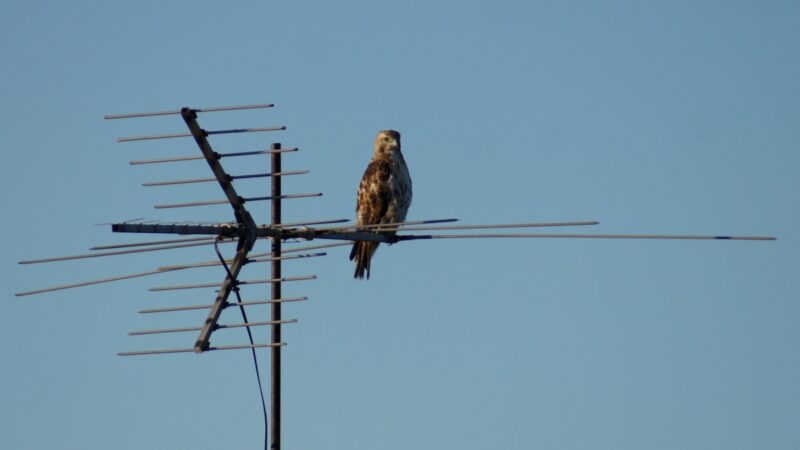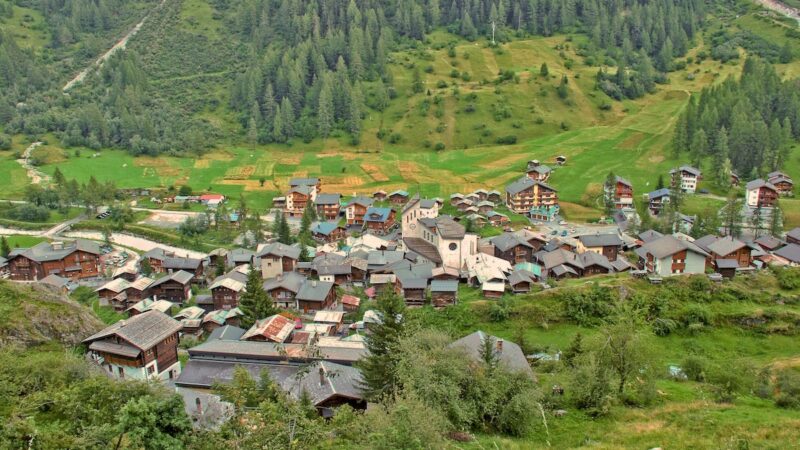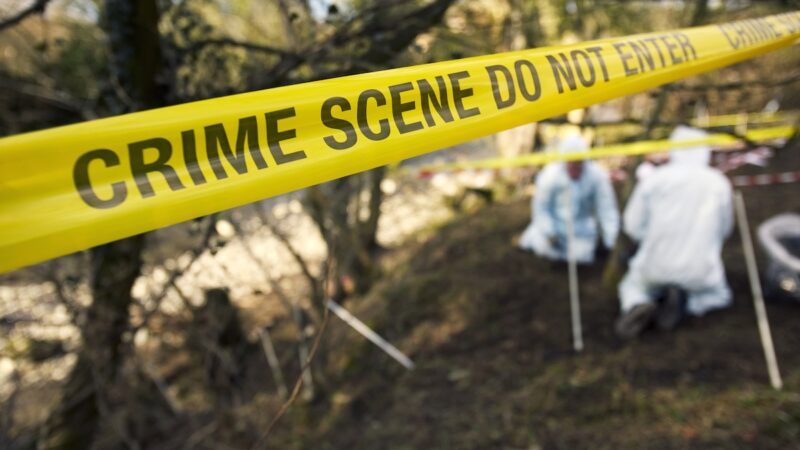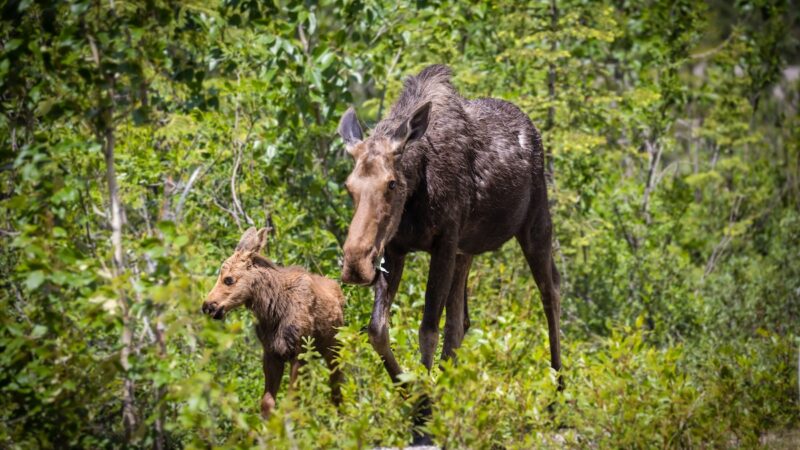10 Best Places To Catch Bass
Bass fishing is a beloved pastime for many anglers around the world. Whether you’re a seasoned pro or just starting out, finding a new and great place to cast your line is always welcomed. Here, outdoors.com presents a list of the 10 best places – from scenic lakes to winding rivers – to catch your next bass.
Gunters Reef, Lake Guntersville, Alabama
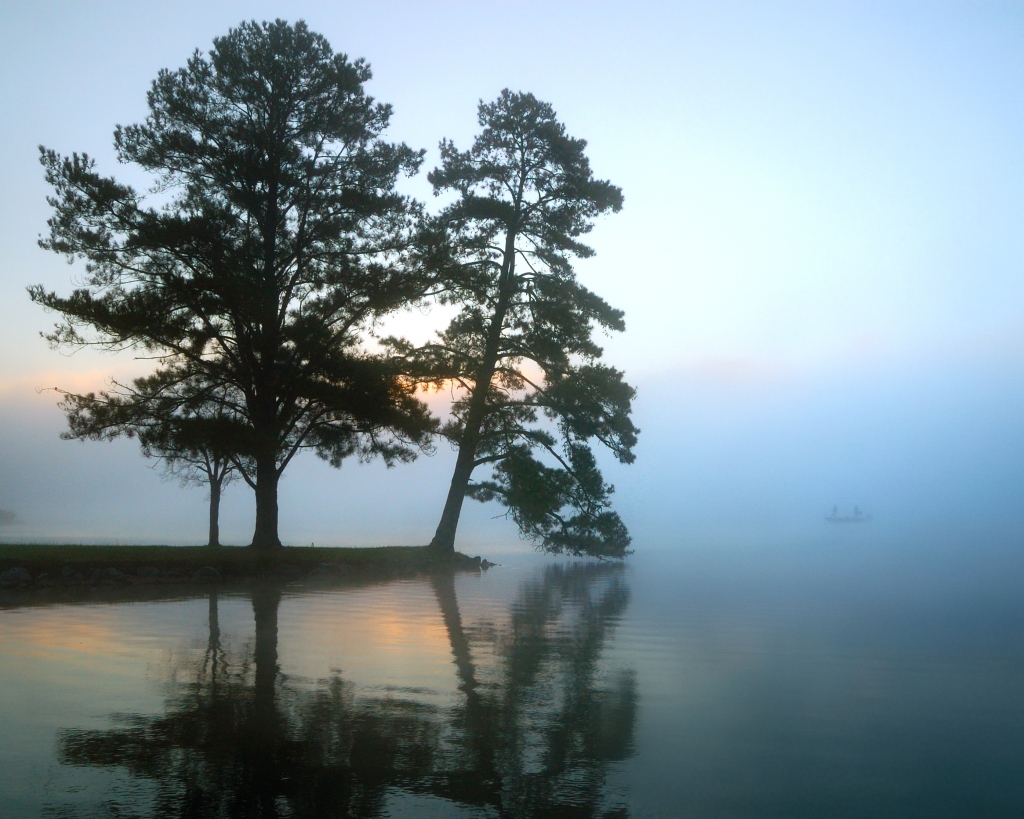
Where to fish: If you’re a serious angler looking for a top-notch bass fishing spot, look no further than Gunter’s Reef on Lake Guntersville in Alabama. This underwater structure near the town of Guntersville is a popular spot known for producing some of the largest bass in the lake.
When to Fish: The best time to fish Gunter’s Reef for bass is in the spring and fall when the fish are active and moving towards shallow water to spawn or feed. During the summer months, the fish tend to move to deeper water and can be more challenging to catch.
What to Expect: If you’re planning to visit Gunter’s Reef, Falcon State Park provides access, boat ramps, and camping areas that range from tent spots to sites with hook-ups for electricity, water, and sewage. Facilities include campsites, restrooms with showers, a fish-cleaning shelter, playgrounds, and a group recreation hall with a kitchen for day use or overnight use. Also, hiking and mountain biking trails provide a one mile self-guided nature trail.
Falcon State Park, Lake Falcon, Texas
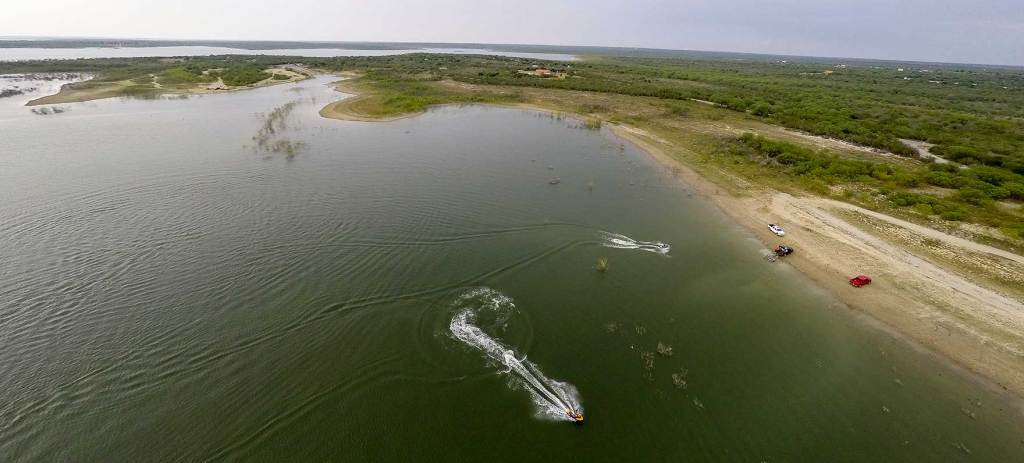
Where to Fish: Falcon International Reservoir, located near the dam at Falcon State Park, is a reservoir that spans approximately 83,000 acres of land and water shared by Texas and Mexico and is a must-visit destination for bass fishing enthusiasts. The lake is generally shallow, with depths of up to 100 feet near the dam. The water is moderately stained throughout much of the lake but can become quite turbid at the upper end. The best fishing spots vary depending on water levels, with standing timber and rocky reefs becoming prime targets during times of drought and low water. Meanwhile, vegetation around the shoreline attracts the bite when the lake is higher.
When to Fish: The fishing calendar in Falcon starts early, with bass typically spawning around the beginning of February when water temperatures warm up to 60 degrees. By mid-summer, daytime temperatures can become extremely hot, causing the bass to retreat to deep structures in the lake’s southern end.
What to Expect: Simply put, you can expect some of the best bass fishing around. This lake is renowned for its abundance of trophy-sized bass, with five pound plus fish being the norm for tournament winners. In fact, several 10-pound bass were caught in Falcon in 2019 and 2020, making it a must-visit spot for any serious angler.
Lake Okeechobee, Florida
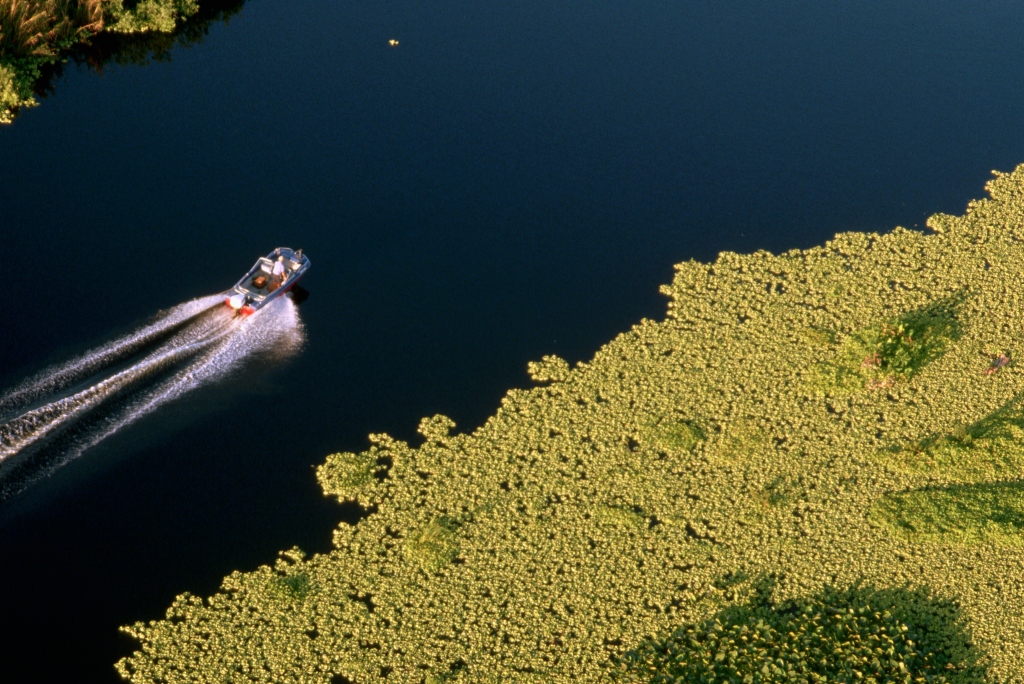
Where to Fish: Lake Okeechobee in Florida is the largest freshwater lake in the U.S. besides the Great Lakes. There is an abundance of big bass and excellent fishing spots. One of the most popular spots on the lake is the South Bay bottom, which spans between Grassy Island and Torry Island in Belle Glade. Here, you’ll find calm waters that are perfect for fishing, making it an ideal spot for anglers of all levels. Plus, the area’s abundant wiregrass “hayfields” are prime spots for catching big bass.
The Belle Glade area is known for being the most diverse area of the lake, and it’s where many tournaments have been won. While the fishing is top-notch, accommodations in the area are minimal, so plan accordingly.
When to Fish: The cooler months between November and June provide the best opportunities for bass fishing. But within that range, the best time to fish is subjective.
What to Expect: Whether you prefer to fish from a boat or shore, Lake Okeechobee has you covered with its excellent boat ramp facilities, kayak launches, and access to charter boats. If you’d rather stay on land, you can explore the Lake Okeechobee Scenic Trail. The lake routinely produces largemouth bass over 8 pounds, and bass weighing 5 to 10 pounds are common. And if you’re lucky, you might even catch a bass weighing up to 12 pounds – or, if you’re lucky, beat the lake record of 15 pounds, 5 ounces caught with a live shiner as bait.
Clear Lake, California
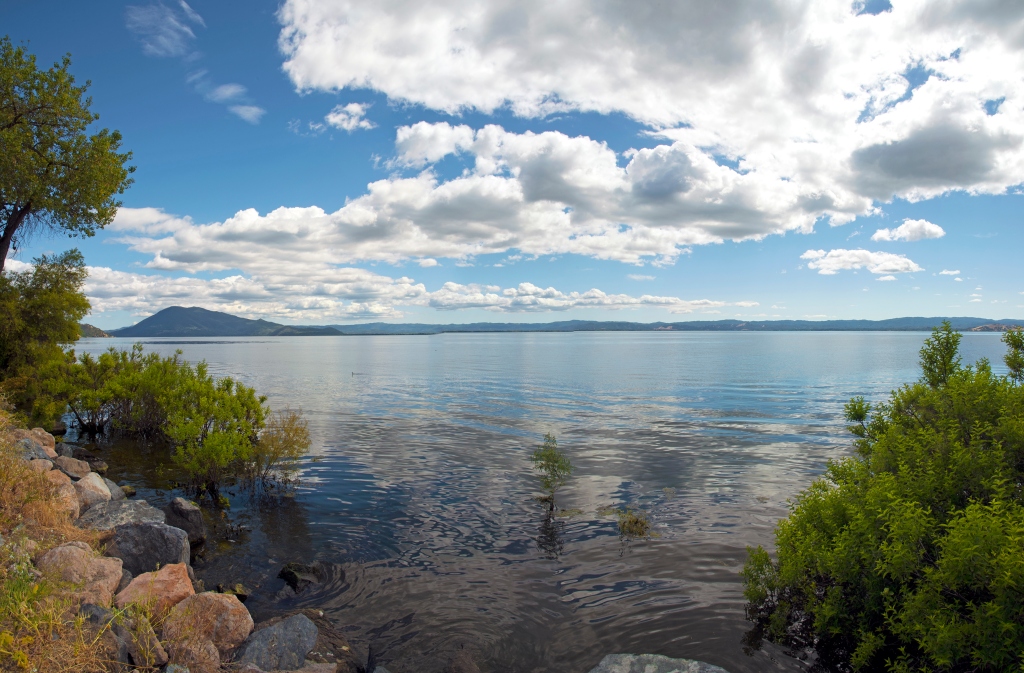
Where to Fish: Clear Lake is a must-visit destination for those seeking to cast their lines in the beautiful state of California. The northwestern shoreline of the lake around the Lakeport area and Berger Bay is a popular spot for bass fishing, especially early in the season. But with countless other excellent fishing spots, Clear Lake will satisfy any angler’s appetite.
What sets Clear Lake apart from other Northern California lakes is its abundance of aquatic vegetation, providing the perfect bass habitat. Weeds, in particular, can be the key to finding these elusive fish. Tules grow in abundance along much of the lake shore, and largemouth bass use them to hide and hunt. So, it’s no surprise that casting along the edge of tules is a favorite tactic among local anglers.
When to Fish: When it comes to timing, spring is undoubtedly the best time to fish for largemouth bass at Clear Lake. This is when more big bass are in shallow water than at any other time of year. As the water temperature rises, largemouth bass begin to head toward Clear Lake’s shallows in March. By mid-April, most years, the spawn is in full swing, and this is the perfect time to catch those prized fish. Clear Lake offers better shallow fishing opportunities during all seasons than most California lakes.
What to Expect: At just over 43,600 acres, Clear Lake is the largest natural lake that lies entirely within California’s borders. It’s warm, weedy, and nutrient-rich, supporting an abundance of the types of habitats and forage that game fish like largemouth bass need to thrive. And as you explore the lake, keep an eye out for osprey and bald eagles overhead and pelicans and great blue herons hunting along the shoreline.
Lake Marion, Santee State Park, South Carolina
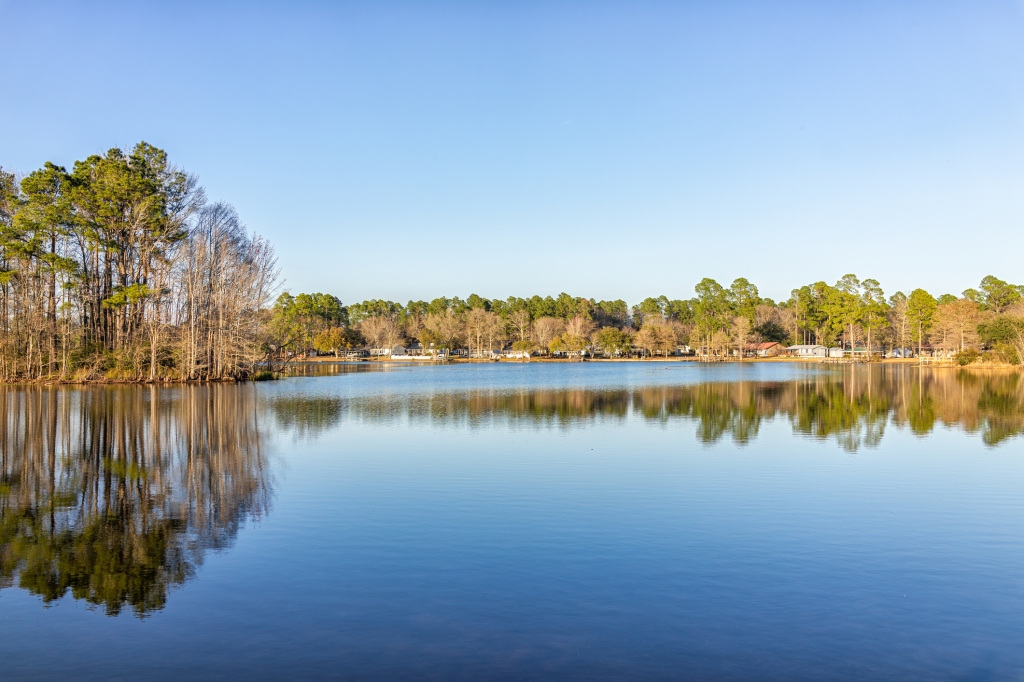
Where to Fish: Lake Marion is very large. To narrow down a great fishing hole, head over to Santee State Park. The state park overlooks Lake Marion and features two boat ramps offering water access.
When to Fish: If you’re looking to catch Striped Bass, spring and fall are the perfect seasons to visit. With a strict seasonal protection plan in place, these beauties are off-limits in the summer months, so plan accordingly. The best part of fishing in Santee Cooper is that there’s always a good time to come. With South Carolina’s subtropical climate, you can enjoy a thrilling day of fishing no matter when you visit. Remember that the Striped Bass season is closed from June 16th through September 30th.
What to Expect: Lake Marion, one of South Carolina’s most unique and exciting fishing destinations, has a drowned forest dotted with trees peeking out of the water. Fishing here feels like a true adventure, especially during the serene moments of dawn and dusk. But what makes Lake Marion even more special is the fact that the roots of these trees are filled with nutrients that attract a range of exciting fish.
It’s not just the fishing that’s amazing. The lake’s shores are fully equipped for tourism, with year-round entertainment for the whole family. Take a stroll through Congaree National Park, Santee State Park, or any special wildlife areas and prepare to be amazed by the area’s beauty.
The beauty of the synonymous state park surrounding South Carolina’s “inland sea” is breathtaking. From camping to luxury holidays, there’s something for everyone here. And if you’re looking for adventure, you can explore the swampy bottoms and backcountry, where monster Catfish and Bass love to feed. Or, if you prefer, stay onshore and hit up the Santee-Cooper Country Club for a round of golf or just take in the green forest’s wonders against the azure lake’s contrast.
Sam Rayburn Reservoir, Texas
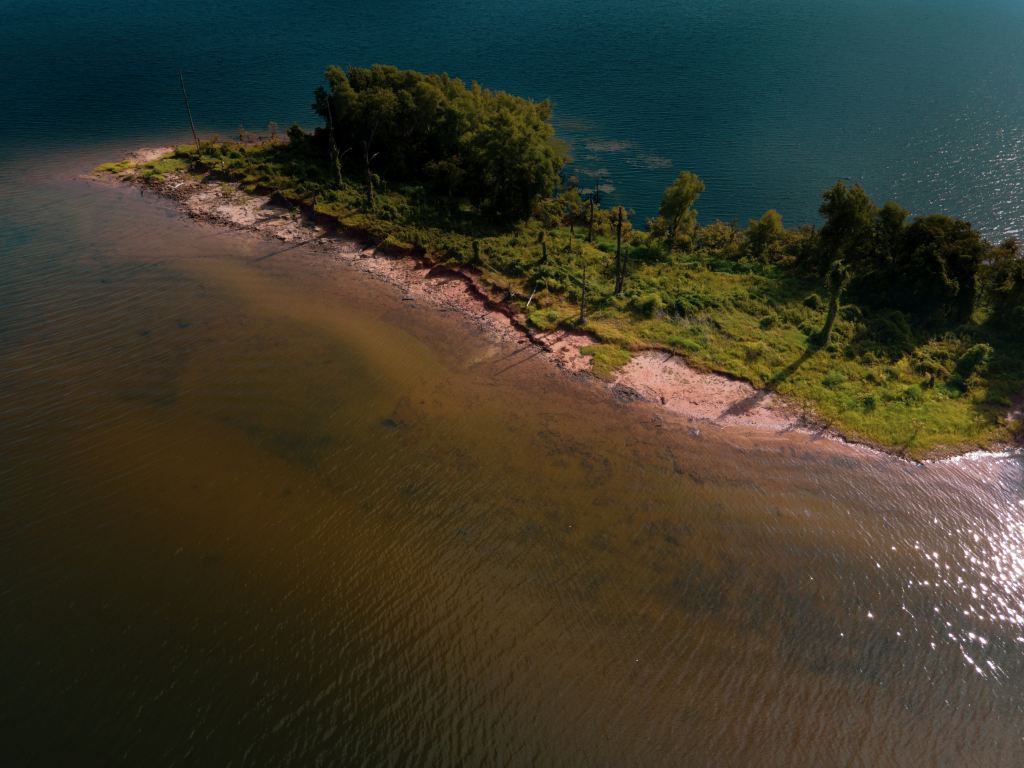
Where to Fish: To get to Sam Rayburn Reservoir, take Interstate 69 or US-190 E or US-59 N. Most bass anglers prefer the lower end of the lake, especially in winter and spring. Rising water levels create a window between the tops of the hydrilla and the water’s surface, which attracts bass. Shallow water pockets are also produced during the spawning season. Watch for areas like Veach Basin and drain channels, which are excellent spots for catching game fish.
When to Fish: The best time to catch a trophy bass at Sam Rayburn is in January and February, when pre-spawn females are loaded with eggs and feeding heavily. Largemouth bass usually spawn in March when water temperatures reach 60 degrees. Expect to find bass on their beds well into April. Winter rains also raise water levels and trigger bass to feed heavily, so watch for changes in weather patterns.
One of the challenges of fishing Sam Rayburn is its sheer size. With so much water to cover, it’s important to identify patterns and find good spots on any given day. Fortunately, several privately operated marinas, bait shops, motels, and resorts are located along the lakeshore to help make your fishing trip a success.
What to Expect: This massive 114,000-acre lake is located just over two hours northeast of Houston and is considered one of the state’s best fishing destinations, offering outstanding bass, crappie, and catfish fishing. The lake is close to smaller cities like Nacogdoches, Lufkin and Jasper, where many locally owned and operated marinas, bait shops, motels and resorts cater to anglers.
Toledo Bend Reservoir, Texas/Louisiana
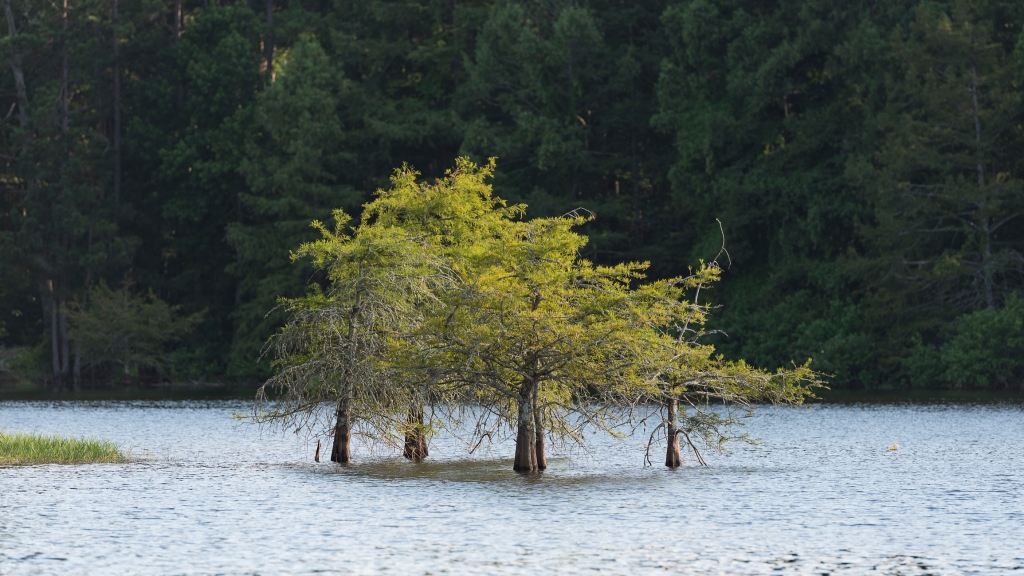
When to Fish: For the best fishing experience, anglers tend to have the most success in spring and fall, while midsummer can be challenging for bass fishing on Toledo Bend. During February, largemouth bass are in pre-spawn mode, while March to April is the best time to find them in their beds.
Where to Fish: If you’re looking for a great place to fish for bass, head to the Louisiana side of Toledo Bend and check out Pendleton Bridge. Known as the 1215 area, this stretch has picture-perfect spawning habitat, making it an excellent spot to cast your line.
Situated about an hour east of Nacogdoches, Texas, and 90 minutes south of Shreveport, Louisiana. At 185,000 acres, Toledo Bend is a massive reservoir, with 1,200 miles of shoreline and stretching 65 miles from north to south along the Sabine River. The Texas side of the lake is bordered by Sabine National Forest, while the Louisiana side includes a mix of public and private lands.
What to Expect: Toledo Bend Reservoir is a bass fishing paradise nestled between the Texas-Louisiana state line. Here at Toledo Bend, dozens of 10-pound bass are caught yearly, and the lake maintains a healthy population of largemouth bass in every size class. With such a wealth of habitat and forage, it’s no surprise that bass does very well here.
St. Lawrence River, New York
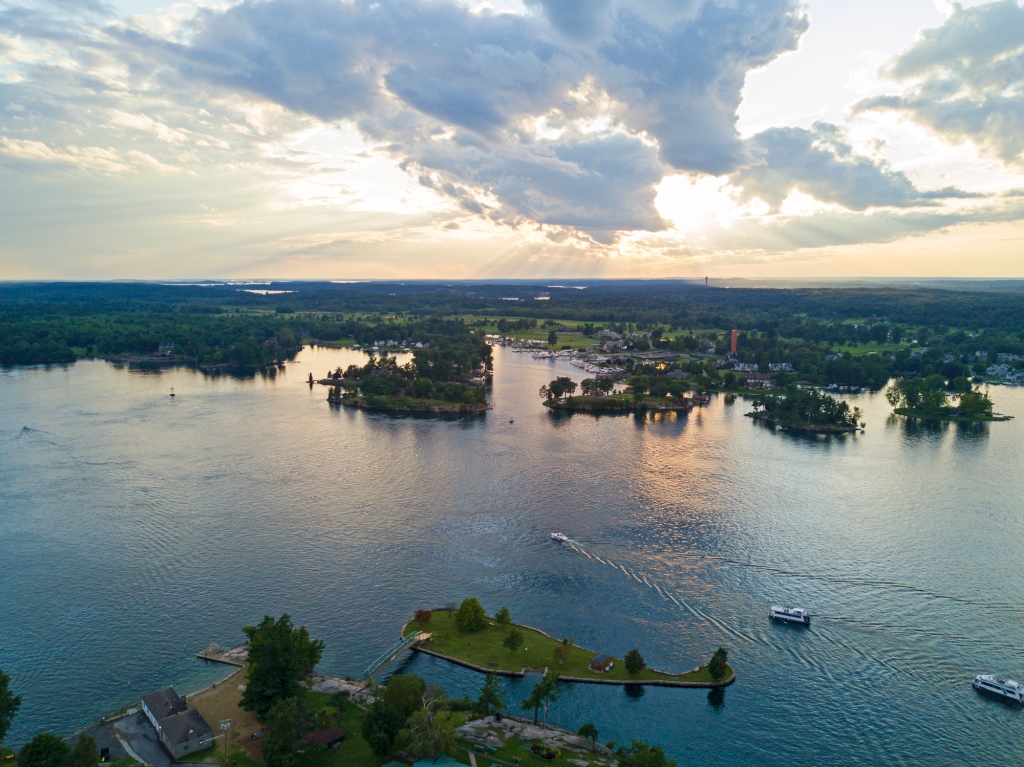
Where to Fish: Looking for a prime fishing spot for largemouth bass? Look no further than the Lake of the Isles on Wellesley Island, the largemouth hotspot for the St. Lawrence River. Located along the border of New York State and the Province of Ontario, the St. Lawrence River is a fishing wonderland famous for its smallmouth and largemouth bass, northern pike, and muskellunge. You’ll want to focus on shallow weedy bays and edges of shoals.
When to Fish: If you’re planning a fishing trip to the St. Lawrence River, knowing when and where to fish is important. Smallmouth bass can be found in early summer along mainland points, island shorelines, rocky areas, and large flats. As the summer progresses, these fish tend to congregate near deep-water points, island drop-offs, and mid-river shoals. Some anglers prefer to drift through areas, while others anchor on key spots. Trolling diving plugs is also an effective technique throughout summer and fall.
What to Expect: The St. Lawrence River has everything you need for a memorable experience. No matter where or when you fish, the St. Lawrence River promises outstanding scenery, fine accommodations, and exceptional recreational facilities. Lake of the Isles is a picturesque lake located on Wellesley Island in the Thousand Islands region of New York. The lake is situated within the Wellesley Island State Park, which boasts over 2,600 acres of natural beauty and recreation.
Visitors can rent a boat or kayak to explore the lake’s many coves and inlets or take a leisurely hike along one of the park’s many scenic trails. For those who prefer to stay on land, plenty of picnic areas and campsites are available, making it a great destination for a day trip or weekend getaway. The lake is home to several events throughout the year, including fishing tournaments and boat races.
Lake Champlain, Vermont/New York
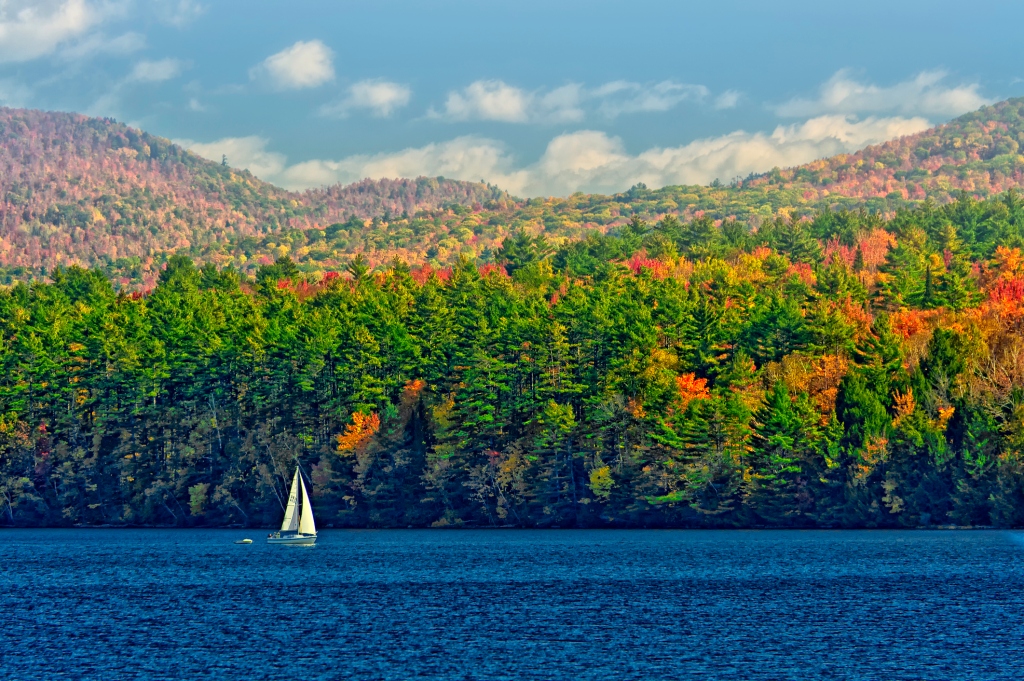
Where to Fish: One of the top spots to fish for Largemouth bass in the area is south of the Champlain Bridge. This area boasts shallow waters full of tournament-winning bass, and rumor is that some real whoppers weighing up to 20 pounds are swimming around there. Launch your boat from either the Port Henry or Ticonderoga state launch sites and get ready to reel in some big ones.
When to Fish: While catch-and-release bass fishing is allowed year-round during the open water season, the best time to experience it is in April and May. South of the Champlain Bridge, the lake narrows and becomes more like a meandering river, with the widest point less than a mile across. This lake area, which is generally shallow with large backwater and wetland areas, provides the first peak bass fishing of the season. With plenty of rocky shorelines and marshy back bays, it’s a highly productive area that reaches optimal water temperatures weeks before waters in the north end.
What to Expect: Nestled between the majestic Adirondack Mountains and the verdant Champlain Valley, this region is home to some of the best fishing in the state of New York. Lake Champlain isn’t just about largemouth bass. This region is home to various fish species, and there are countless streams, rivers, and other lakes or ponds with fantastic fishing opportunities. Whether you prefer deep corners of the lake or secluded ponds, there’s a waterway ripe for whichever species you prefer to fish.
Lake Fork, Texas
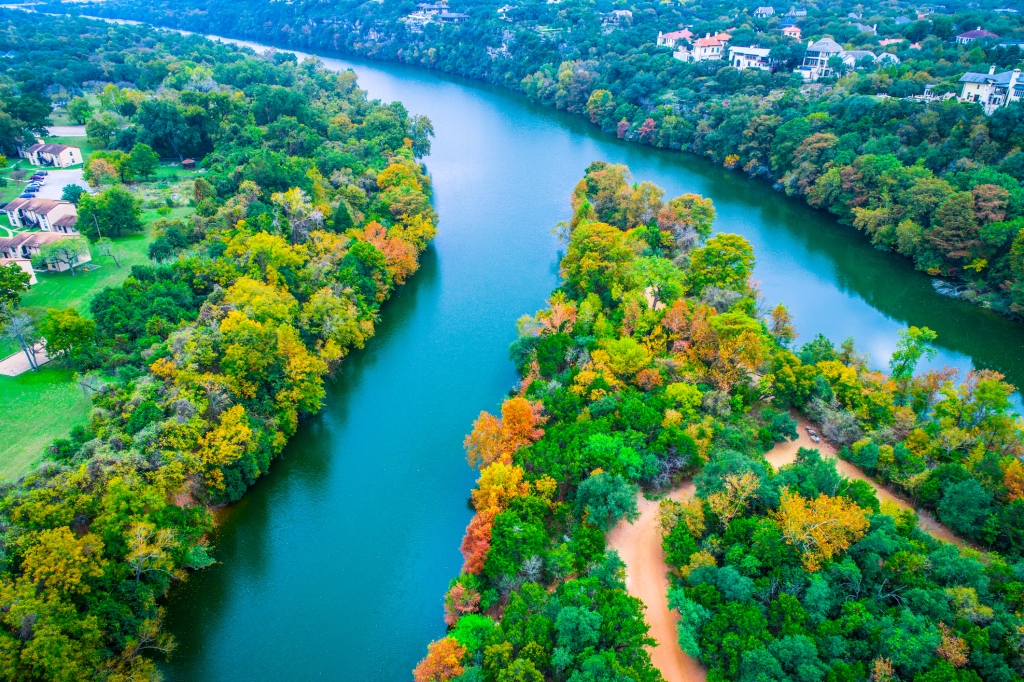
Where to Fish: Lake Fork, a 27,264-acre reservoir in the Pineywoods region of Texas, just east of Dallas. This lake has produced 15 of the 25 largest bass ever caught in Texas, including all of the top five, with the 18.18-pound state record being caught here in 1992.
The lake is deep and moderately clear, with an abundance of points and coves, as well as ample forage and a wide variety of natural and artificial cover. Creek arms like Little Caney Creek offer some of the best bass fishing on the lake. However, Lake Fork has fewer public access sites than many other big Texas lakes, with most of the privately owned shoreline. But don’t worry. There are still several excellent options for anglers to launch a boat or fish from the bank.
When to Fish: Largemouth bass anglers are most successful on Lake Fork during the spring, fall, and winter months. Night fishing can be very productive during summer and a good way to beat the Texas heat.
What to Expect: Lake Fork Reservoir is a popular tourist destination in Texas, attracting visitors from all over the state and beyond. The lake is known for its exceptional bass fishing, with the lake holding the record for the largest bass caught in Texas. Aside from fishing, there are many other activities to enjoy at Lake Fork, including boating, water sports, bird watching, hiking, and camping.


